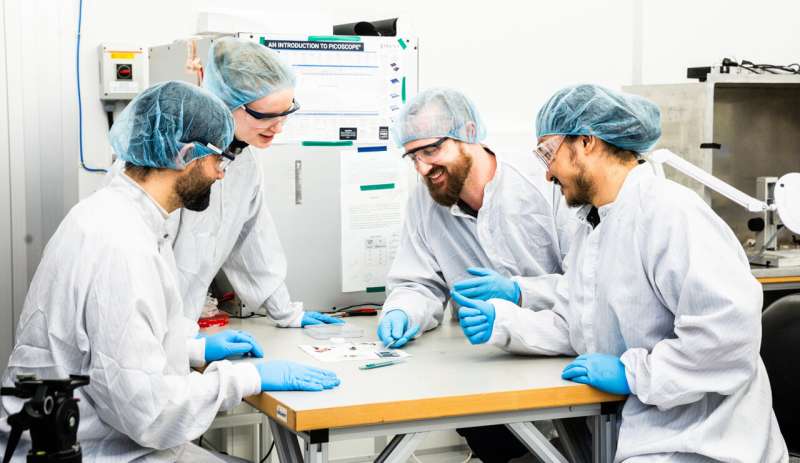Using electrodes in a fluid form, researchers at Linköping University have developed a battery that can take any shape. This soft and conformable battery can be integrated into future technology in a completely new way. Their study has been published in the journal Science Advances.
“The texture is a bit like toothpaste. The material can, for instance, be used in a 3D printer to shape the battery as you please. This opens up for a new type of technology,” says Aiman Rahmanudin, assistant professor at Linköping University.
It is estimated that more than a trillion gadgets will be connected to the Internet in 10 years’ time. In addition to traditional technology such as mobile phones, smartwatches and computers, this could involve wearable medical devices such as insulin pumps, pacemakers, hearing aids and various health monitoring sensors, and in the long term also soft robotics, e-textiles and connected nerve implants.
If all these gadgets are to work in a way that does not hinder the user, new types of batteries need to be developed.
“Batteries are the largest component of all electronics. Today they are solid and quite bulky. But with a soft and conformable battery, there are no design limitations. It can be integrated into electronics in a completely different way and adapted to the user,” says Aiman Rahmanudin.
Together with his colleagues at the Laboratory of Organic Electronics, LOE, he has developed a battery that is soft and malleable. The key has been a new approach—converting the electrodes from a solid to a liquid form.

Previous attempts to manufacture soft and stretchable batteries have been based on different types of mechanical functions, such as rubbery composite materials that can be stretched out or connections that slide on each other. But this does not deal with the core of the problem—a large battery has higher capacity, but having more active materials means thicker electrodes and thus higher rigidity.
“Here, we’ve solved that problem, and we’re the first to show that capacity is independent of rigidity,” says Rahmanudin.
Fluid electrodes have been tested in the past but without any great success. At that time, liquid metals such as gallium were used. But then the material can only function as an anode and has the risk of being solidified during charging and discharging—losing its fluid nature. In addition, many of the stretchable batteries previously made have used rare materials that have a major environmental impact when mined and processed.
The researchers at LiU Campus Norrköping have instead based their soft battery on conductive plastics (conjugated polymers) and lignin, a byproduct from paper production. The battery can be recharged and discharged over 500 times and still maintain its performance. It can also be stretched to double the length and still work just as well.
“Since the materials in the battery are conjugated polymers and lignin, the raw materials are abundant. By repurposing a byproduct like lignin into a high-value commodity such as a battery material, we contribute to a more circular model. So, it’s a sustainable alternative,” says Mohsen Mohammadi, postdoctoral fellow at LOE and one of the lead authors behind the article.
The next step is to try to increase the electrical voltage in the battery. According to Rahmanudin, there are currently some limitations that they need to overcome.
“The battery isn’t perfect. We have shown that the concept works but the performance needs to be improved. The voltage is currently 0.9 volts. So now we’ll look at using other chemical compounds to increase the voltage. One option that we are exploring is the use of zinc or manganese, two metals that are common in Earth’s crust,” says Rahmanudin.
More information:
Mohsen Mohammadi et al, Make it flow from solid to liquid: redox-active electrofluids for intrinsically stretchable batteries, Science Advances (2025). DOI: 10.1126/sciadv.adr9010. www.science.org/doi/10.1126/sciadv.adr9010
Citation:
A fluid battery that can take any shape (2025, April 11)
retrieved 11 April 2025
from https://techxplore.com/news/2025-04-fluid-battery.html
This document is subject to copyright. Apart from any fair dealing for the purpose of private study or research, no
part may be reproduced without the written permission. The content is provided for information purposes only.

